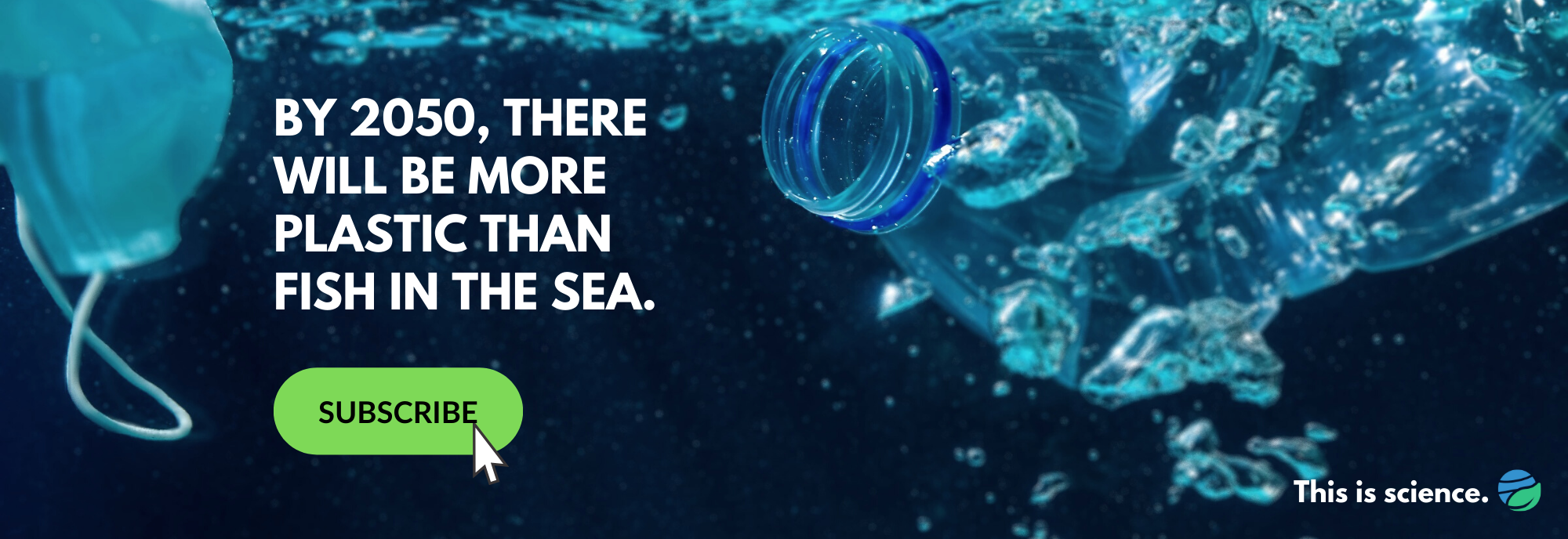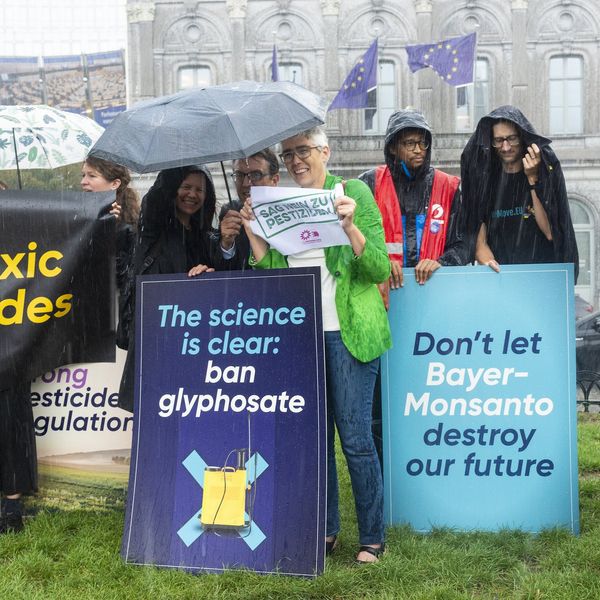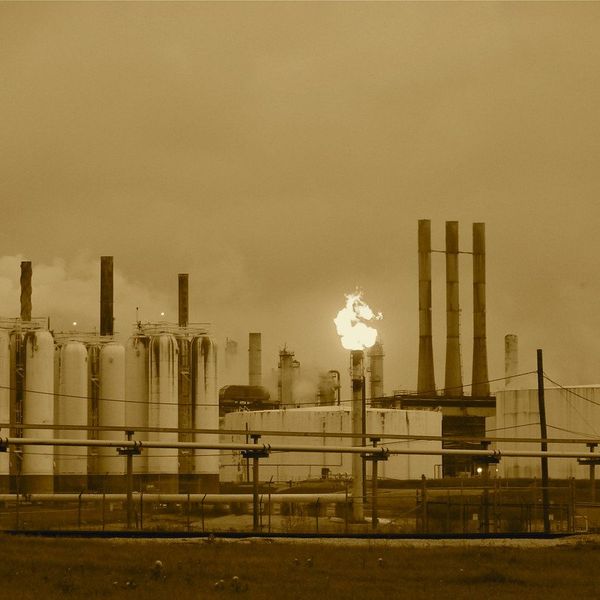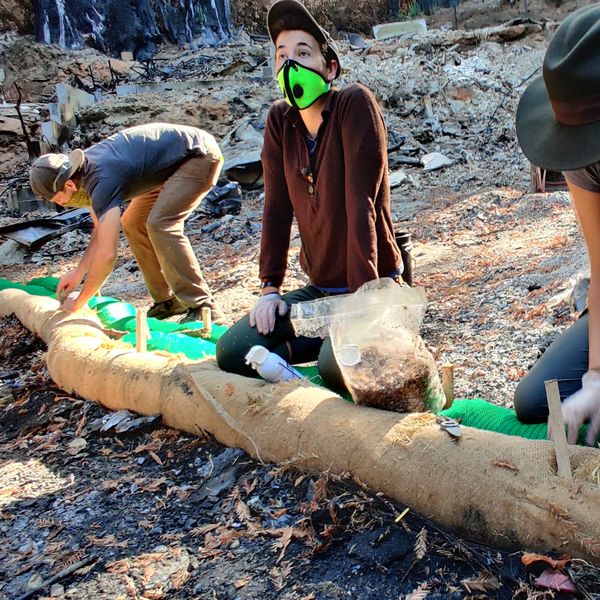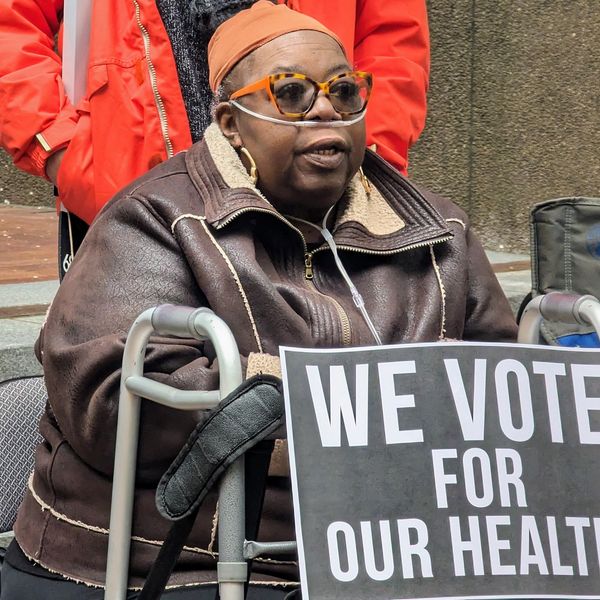Lisa Nurnberger was reviewing materials for a report on communities impacted by ethylene oxide, a typical task as media director of the Union of Concerned Scientists, when she spotted her hometown on the list.
She lived less than three miles from two spice fumigation facilities owned by Elite Spice that were emitting carcinogenic ethylene oxide (EtO). She regularly biked through the area, which has an elevated lifetime cancer risk of one in 10,0000, according to the most recent reporting by the Environmental Protection Agency (EPA).
“I was pretty freaked out. I felt like there was a bomb in my backyard that I didn’t know about,” Nurnberger told EHN.
She drove out to the spice sterilization facility and saw scenes that alarmed her: a food truck run by a couple in front of their home, a kid getting off the bus from school and an outdoor doggy daycare, all within the elevated cancer risk zone.
While community members concerned her, “the workers are the people who I’m most concerned about because they’re exposed both inside and outside the plant,” Nurnberger said.
Since then, she has advocated for her community at EPA meetings, calling for stricter regulations and a ban on EtO used to fumigate spices.
EtO is a fossil fuel byproduct used in many industrial processes, from sterilizing medical equipment and fumigating spices to manufacturing ethylene glycol, a ubiquitous industrial chemical. While the U.S. allows EtO in foods, with some regulations, some countries, including those in the European Union, ban it due to its risk to human health. Last August, the EU banned exports of vanilla extract from the U.S. due to the frequent presence of EtO. They’re now requiring EtO testing and certification from the U.S. government when vanilla extract is shipped, but the FDA, which would be responsible for such certification, doesn’t provide this.
Both the EPA and the International Agency for Research on Cancer classify inhaled EtO as a carcinogen. Human health studies of workers exposed to EtO show strong evidence of increased leukemia, lymphoid tissue cancer and breast cancer. When these studies are considered alongside animal studies, it’s conclusive of being carcinogenic, the EPA reports.

Last August, the EU banned exports of vanilla extract from the U.S. due to the frequent presence of ethylene oxide.
Credit: Nestlé/flickr
The EU regulates EtO in food following the “precautionary principle,” the theory that potentially-harmful chemicals should be proven to be safe before people are exposed to them, rather than regulated only after harm is shown.
“EtO is dangerous if you inhale it… but if you eat it, we don’t know,” Agnieszka Rudzka, a scientist studying food safety told EHN. The EU’s limit is stringent, she said, “the regulation is actually the limit of detection for many of the analytical methods there are to [determine] the concentration of EtO.”
Rudzka explained that the EU banned vanilla extract from the U.S. because “the extract was contaminated too frequently, and it’s better not to spend money on this test and ask the manufacturers to do this instead.”
For now, this means a total ban on vanilla extract exports to the EU, because the FDA offers no process for certification of exports, and the EU won’t accept certification by third parties.
“EtO is dangerous if you inhale it… but if you eat it, we don’t know." - Agnieszka Rudzka, scientist studying food safety
“At this time, the FDA does not intend to issue certificates to export vanilla extract to the EU because the Agency does not have adequate information to make the required determination,” an FDA spokesperson told EHN over email. They said this has to do with differing regulatory guidelines on levels of EtO in foods between the EU and the U.S.
“There are places outside of the U.S. that have banned the use of ethylene oxide for dried food and spice sterilization, so it’s certainly possible,” Darya Minovi, environmental health expert and senior analyst at the Union of Concerned Scientists, told EHN. She advocates for limiting EtO use wherever possible, and urges the FDA to approve other materials for sterilization for medical devices, such as hydrogen peroxide.
Ethylene oxide air pollution
The health impacts of consuming foods that contain EtO, like some fumigated spices, are uncertain due to a lack of extensive research, explained Minovi, but the science shows that air emissions of EtO from manufacturers, such as spice fumigation facilities, have proven carcinogenic effects.
Sterilization facilities emitting EtO are disproportionately located in communities of color, low-income communities and non-English-speaking communities, a report Minovi authored recently found. Of the 14.2 million people living within five miles of a facility that emits EtO identified by the report, nearly 60% identify as people of color. These communities are often located near multiple industrial sites, potentially exposing them to a cocktail of harmful chemicals.
The EPA is currently updating its EtO regulations for commercial sterilizers with stricter regulations to reduce emissions, a process required by the Clean Air Act with a 2014 deadline the agency has missed. The agency says their new proposal would reduce the maximum individual cancer risk to 100-in-1-million or lower at all facilities. Currently, facilities with the worst emissions have a maximum individual cancer risk of 6,000-in-1-million.
“There are places outside of the U.S. that have banned the use of ethylene oxide for dried food and spice sterilization, so it’s certainly possible." - Darya Minovi, Union of Concerned Scientists
While the updated regulations promise to significantly reduce EtO emissions, that won’t be sufficient, said Minovi. “Just because you have regulation in place does not mean that it’s going to be enforced adequately. One thing that was missing from the proposed regulation was fenceline monitoring.”
Monitoring for EtO in the communities around facilities is essential to protect people’s health and ensure environmental justice, she said.
Fenceline monitoring is essential because industrial users of EtO don’t always keep track of their total emissions, Dave Arndt, a climate, environment and social justice advocate based in Baltimore, told EHN. EtO can escape from pipes, flanges and valves within facilities, he said, “right now, there really isn’t any planning or monitoring for that.”
Arndt sees EtO at the intersection of his advocacy work, impacting people and the planet, since EtO is a fossil fuel byproduct that harms “poor, overburdened Black, brown, Indigenous areas.”
His home state of Maryland briefly considered a bill proposed by state Sen. Pamela Beidle that would have banned any use of EtO, but it was never enacted. Maryland Sen. Beidle is now waiting for the updated EPA regulation before proceeding with the legislation.
Nurnberger hopes to see a federal ban for EtO used as a food fumigant soon. She noted that the facilities emitting the chemical in her neighborhood are innocuous and difficult to identify as potentially harmful, without smoke stacks or visible emissions. For now, she avoids her local bike trails that pass the spice facilities.
“I just feel even worse for these folks who live closer to the plants.”
- Texas is underestimating cancer risk from air pollution, health advocates say ›
- Overlooked by the EPA, a Black West Virginia community sues over air pollution ›
- EPA seeks to slash chemical plants’ cancer-causing emissions ›
- Ethylene oxide adds to toxic burden for Memphis residents ›
- Cancer-causing emissions in Pittsburgh-area borough prompt meeting with EPA ›
- “Cancer Alley” residents exposed to more than the lifetime exposure limit for cancer-causing compound: Report - EHN ›



